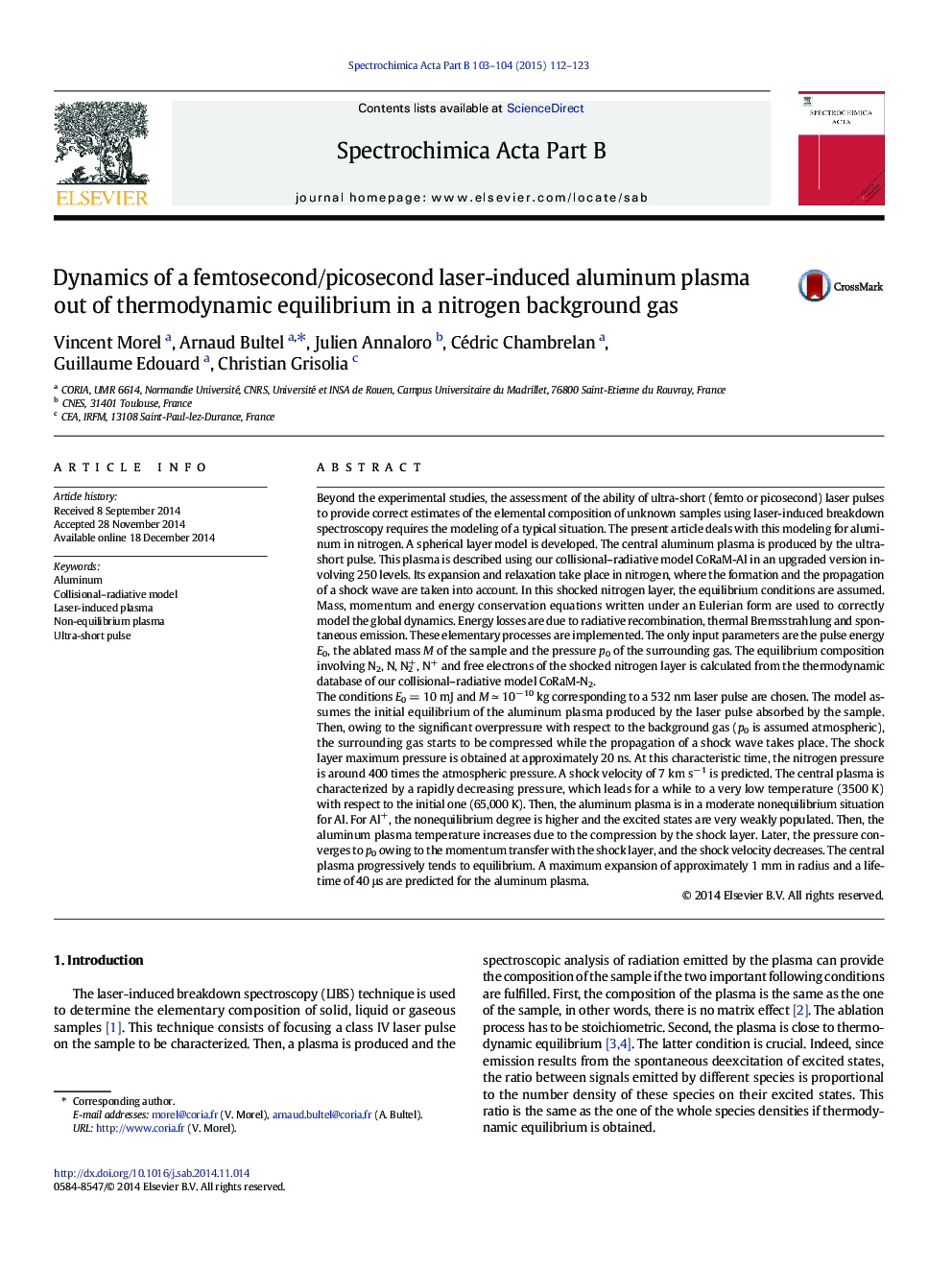| Article ID | Journal | Published Year | Pages | File Type |
|---|---|---|---|---|
| 1240139 | Spectrochimica Acta Part B: Atomic Spectroscopy | 2015 | 12 Pages |
•A 250 levels collisional–radiative model is implemented in an aerodynamic code.•The relaxation of the plasma is simulated up to its extinction.•Boltzmann plots for Al and Al+ are studied.•We show that fs/ps laser-induced plasmas are close to thermodynamic equilibrium.
Beyond the experimental studies, the assessment of the ability of ultra-short (femto or picosecond) laser pulses to provide correct estimates of the elemental composition of unknown samples using laser-induced breakdown spectroscopy requires the modeling of a typical situation. The present article deals with this modeling for aluminum in nitrogen. A spherical layer model is developed. The central aluminum plasma is produced by the ultra-short pulse. This plasma is described using our collisional–radiative model CoRaM-Al in an upgraded version involving 250 levels. Its expansion and relaxation take place in nitrogen, where the formation and the propagation of a shock wave are taken into account. In this shocked nitrogen layer, the equilibrium conditions are assumed. Mass, momentum and energy conservation equations written under an Eulerian form are used to correctly model the global dynamics. Energy losses are due to radiative recombination, thermal Bremsstrahlung and spontaneous emission. These elementary processes are implemented. The only input parameters are the pulse energy E0, the ablated mass M of the sample and the pressure p0 of the surrounding gas. The equilibrium composition involving N2, N, N2+, N+ and free electrons of the shocked nitrogen layer is calculated from the thermodynamic database of our collisional–radiative model CoRaM-N2.The conditions E0 = 10 mJ and M ≃ 10− 10 kg corresponding to a 532 nm laser pulse are chosen. The model assumes the initial equilibrium of the aluminum plasma produced by the laser pulse absorbed by the sample. Then, owing to the significant overpressure with respect to the background gas (p0 is assumed atmospheric), the surrounding gas starts to be compressed while the propagation of a shock wave takes place. The shock layer maximum pressure is obtained at approximately 20 ns. At this characteristic time, the nitrogen pressure is around 400 times the atmospheric pressure. A shock velocity of 7 km s− 1 is predicted. The central plasma is characterized by a rapidly decreasing pressure, which leads for a while to a very low temperature (3500 K) with respect to the initial one (65,000 K). Then, the aluminum plasma is in a moderate nonequilibrium situation for Al. For Al+, the nonequilibrium degree is higher and the excited states are very weakly populated. Then, the aluminum plasma temperature increases due to the compression by the shock layer. Later, the pressure converges to p0 owing to the momentum transfer with the shock layer, and the shock velocity decreases. The central plasma progressively tends to equilibrium. A maximum expansion of approximately 1 mm in radius and a lifetime of 40 μs are predicted for the aluminum plasma.
